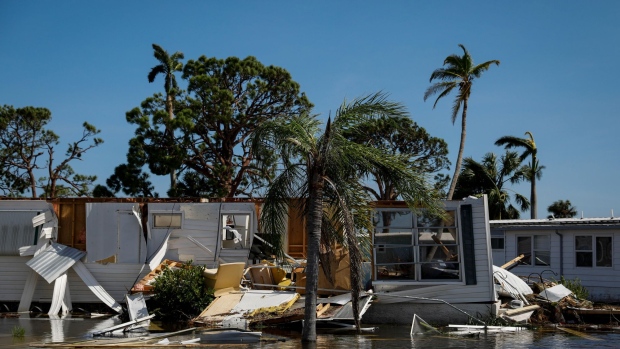Sep 30, 2022
Hurricane Ian Bears Down on South Carolina Coast Near Charleston
, Bloomberg News

(Bloomberg) -- Hurricane Ian threatens to bring further death and destruction when it makes its second big strike on the US near Charleston, South Carolina on Friday afternoon.
Ian’s top winds reached 85 miles (137 kilometers) per hour, making it a Category 1 storm, as it moves toward the coast near the historic city, the US National Hurricane Center said. While the winds won’t match the fury it brought to western Florida Wednesday, the storm surge will leave trail of destruction across the US South. President Joe Biden issued a disaster declaration in South Carolina.
The hurricane will hit a large part of the state’s coast with a wall of water 3 feet (0.9 meters) high, with the surge reaching as much as 7 feet in the area around flood-prone Charleston. Some areas will get as much as 12 inches (30 centimeters) of rain. About half of all hurricane deaths are from flooding.
At least seven people have been killed in the storm: four in Florida and three in Cuba, according to the Associated Press. Authorities have warned the death toll may climb.
“This is a life-threatening situation,” Robbie Berg, a senior hurricane specialist, at the center wrote in his forecast. “There is a danger of life-threatening inundation, from rising water moving inland from the coastline.”
Ian tore a path of destruction across Florida Wednesday and Thursday after landing as one of the strongest storms to hit the US. Thousands of homes and businesses were flooded and millions were left without power. In addition to property losses, Ian has also has done substantial damage to Florida’s citrus crop and is now threatening cotton across the Carolinas, said Don Keeney, a meteorologist with forecaster Maxar.
Keeney said the storm surge along the coast of South Carolina will bring flooding, while the heavy rains will extend into neighboring North Carolina and Virginia through the weekend. The governors of all three have declared emergencies.
Meanwhile the clean up continues in Florida.
“It is one of the strongest to cut across Florida, it certainly ranked at the top,” Keeney said.
Ian will eventually drift back into the Atlantic by early next week but not before bringing a deluge to the eastern US.
©2022 Bloomberg L.P.






